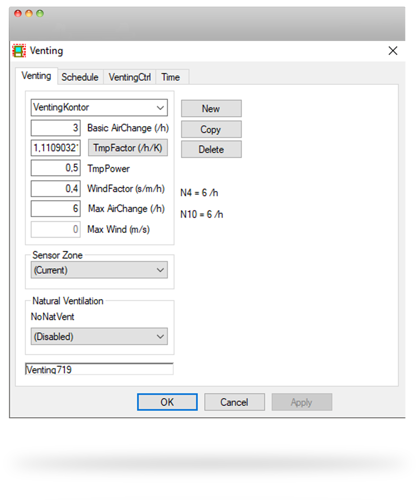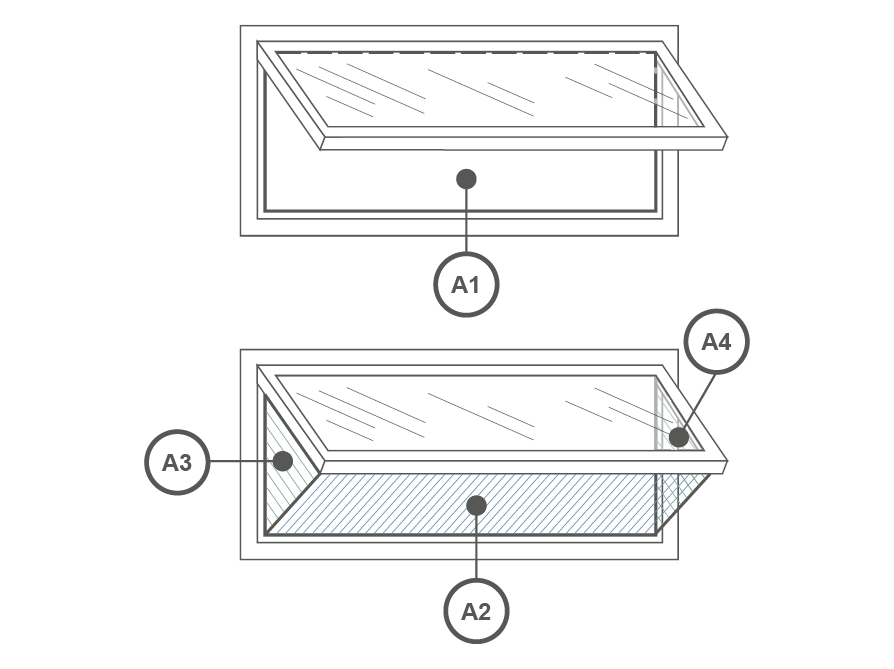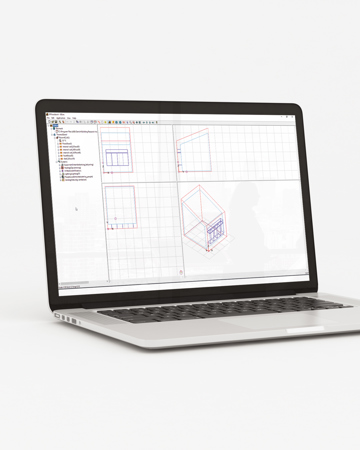How to implement natural ventilation in BSim
Program: BSim (Building Simulation) Development and maintenance: SBi (Danish Building Research Institute) Do you have questions about using BSim for natural ventilation? Contact us.
Contact an EngineerHow can WindowMaster's BSim guide help you?
BSim has an excellent user guide, so the purpose of this document is to add information on how to include natural ventilation in a BSim simulation.
Our experience is that the systems used for analyzing natural and hybrid ventilation in BSim are both user-friendly and well-tested.
If natural pulse ventilation is used during the winter, we recommend to supplement with a separate calculation analyzing the CO2 level during winter time using steady state calculations. Using this calculation allows you to determine the required amount of time that windows should be open throughout the day based on personal load. WindowMaster’s dedicated experts will gladly help you make this calculation.
Often it is only necessary to create models for two or three rooms (thermal zones), e.g. one typical room and one worst-case room. However, at other times, it is necessary to create models for nearly all rooms if the internal loads, usage, orientation etc. of the rooms differ markedly.
You will only get one operative temperature per thermal zone. Hence, a room needs to be divided into more zones if, for instance, the exposure from the sun varies greatly in different areas in the room.
Thermal stratification up through the thermal zone can be simulated using “Kappa Model”. This can be used for e.g. an atrium.
Natural ventilation and building geometry
Venting systems can be used for all kinds of building geometry, while natural ventilation systems are primarily for buildings with traditional geometry (square and rectangular buildings), since these systems will use standard wind pressure coefficients for each window. You can use natural ventilation systems for other geometry. However, you will then need to look closely into the air change variations during the year. For a natural ventilation solution with assisting mechanical exhaust, we recommend using a venting system. If you have traditional building geometry, your results using natural ventilation systems could be a bit more accurate compared to a venting system, but our experience is that both systems are very suitable for calculating natural ventilation. The weather data file must contain information about the wind speed to make a simulation of natural ventilation.

Venting systems
Venting can simulate an air change, which varies with the difference between the temperature indoors and outdoors plus the wind speed. When there is a tendency for the setpoint to be exceeded, the natural ventilation is increased, but only up to a user-defined maximum air change.
You will find help in the user guide for each value you need to enter in Venting.
On our Air Change Rate Calculator, you will be able to calculate the Basic AirChange if you are unsure what value to use.
Max AirChange will often be set to 6 h-1 if the room is for seated activity.
In Schedule you will often make more lines. One for summer day ventilation with a setpoint of e.g. 23°C and one for summer night ventilation with a setpoint of e.g. 20°C. Night ventilation could stop around 4-5 AM to make sure the building is well tempered when people arrive. Finally, you will make one line for winter ventilation with a setpoint of e.g. 21°C.

Natural ventilation systems
Natural ventilation is implemented as a special kind of Venting in an expansion module of BSim and is based on By og Byg (SBi) Direction 202 (2002) which sets out how to make air change calculations for natural ventilation.
Natural ventilation requires input at various places: Site. Finish. Opening. Windoor. Venting. In the user guide you will find excellent help, and therefore we will only focus on a few elements.
Finish needs to be filled in for walls and roofs facing outdoors. You will find Finish in the tree structure just beneath the building element.
Windoor
Afrac x A needs to be equal to the geometrical opening area of the window hence the opening area when the window is open for ventilation.
A1 or A2 + A3 + A3.
The lowest of the two is the windows geometrical opening area.
It needs to be considered whether building elements, solar shading or similar block the airflow, and therefore reduce the geometrical opening area.
Based on placement of openings, the most suitable model can be identified automatically by BSim or you can choose yourself. Only openings facing the ambient are considered.

How to read results from BSim
When evaluating the results, it may be beneficial to look at outdoor temperature, operative temperature, windspeed and air change at the same time to see how the thermal zones perform during the year. If using pulse ventilation during winter time you can make a separate analysis as stated earlier in the document.
